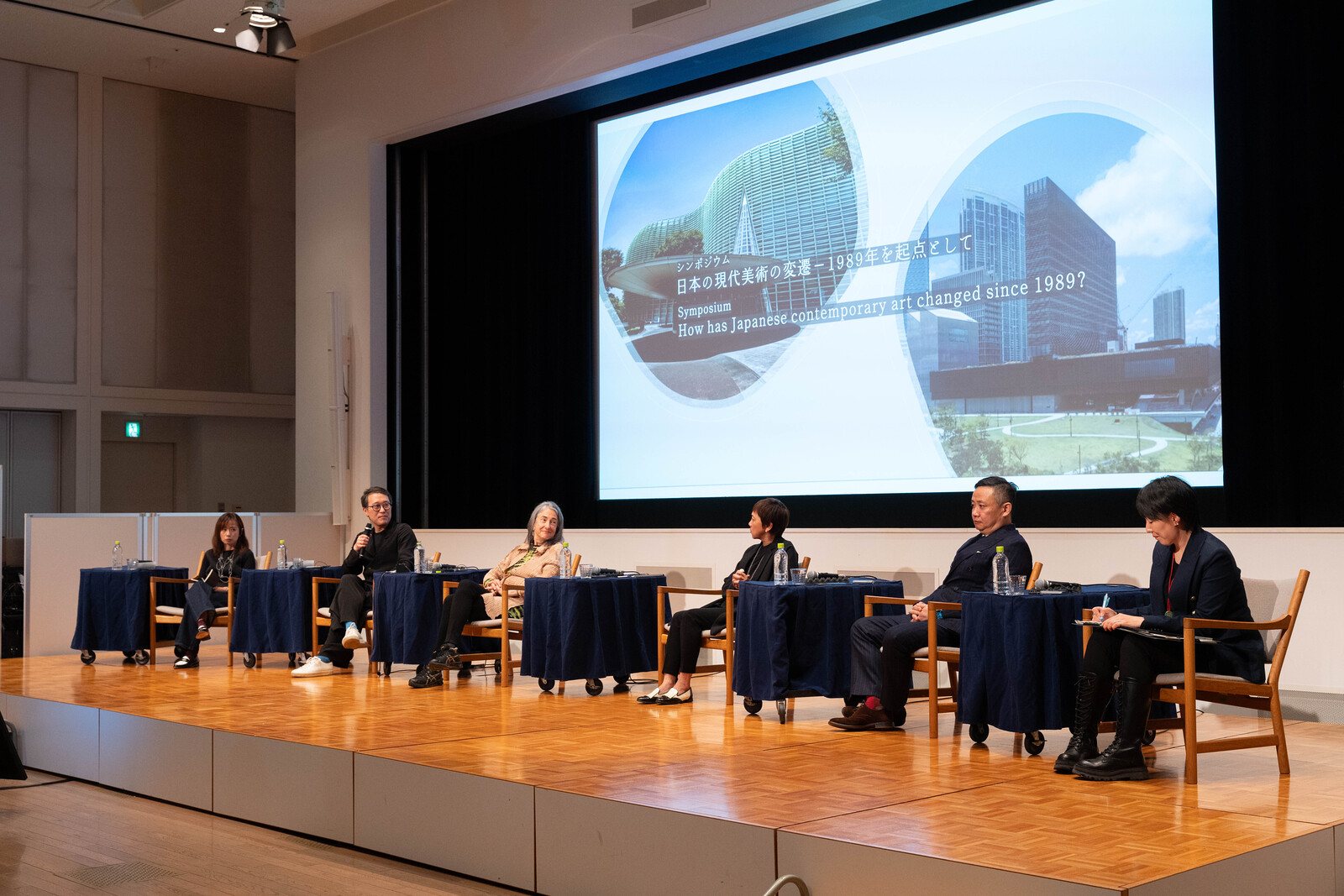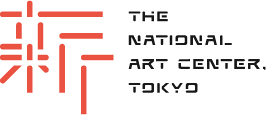September 3–December 8, 2025
7-22-2 Roppongi, Minato-ku
Tokyo 106-8558
Japan
Hours: Wednesday–Monday 10am–6pm,
Friday–Saturday 10am–8pm
T +81 47 316 2772
The National Art Center, Tokyo is pleased to present “Japanese Contemporary Art and the World 1989-2010 (working title),” a historical survey of Japanese contemporary art between 1989 and 2010, bracketed by two major events in Japan’s recent past: the end of the Showa era (1926‒1989) and the beginning of the Heisei period (1989‒2019), and the Tohoku Earthquake in 2011.
Prior to the opening of the exhibition, a related symposium “How has Japanese contemporary art changed since 1989?” was held at NACT on November 8, 2024.
Archival footage is available for viewing.
With its long and rich history of modern and contemporary art, design and architecture, and moving image, Japan has played an important role in international history of art and visual culture. In March 2024, NACT and M+ signed a Memorandum of Understanding (MOU) embarking on a first international curatorial collaboration. NACT, one of the fifth institutions established under the Independent Administrative Institutional National Museum of Art founded with a mission of advocating and sharing new discoveries and expressions of contemporary art; and M+, the first global museum of contemporary visual culture in Asia, with a significant network and commitment in Japan which is well reflected in M+’s exhibition programs and collections. This collaboration signifies both institutions are sharing the curatorial expertise on Japanese art, looking from their diverse interests and perspectives inside and the outside the country to provide an alternative entry point to examine recent history of Japanese contemporary art.
This exhibition presents a historical survey of Japanese contemporary art between 1989 and 2010, bracketed by two major events in Japan’s recent past: the end of the Showa era (1926‒1989) and the beginning of the Heisei period (1989‒2019), and the Tohoku Earthquake in 2011.
The exhibition traces a trajectory of contemporary art in Japan beyond national and territorial frameworks, evolving through a rich array of international exchanges. Featuring Japanese artists living inside and outside their native country alongside works by international artists, the exhibition is structured with two intertwined strands of iconic works of art and stories of lesser-known projects developed by artists, they are presented through curatorial lenses of “identities,“ memories and counter-memories”, and“ network of relationships” to illustrate key phenomena and shifting focus of Japanese contemporary art in this period.
The lens “identities” looks at Japanese contemporary art is a complex and evolving construction. It questions the dichotomy between Japan and the West, and interrogates the concept of singularity of Japanese art by highlighting practices seeking for convergence of tradition and contemporary, engaging in discussion of critical contemporary topics on cultural and gender diversity, alongside the experience of youth and popular culture to the dynamic expression of cultural vibrancy and diversity of Japanese contemporary art.
“Memories and counter-memories” is a lens looks at both personal and collective memories in relation to Japan’s past, dissecting and reassessing the official history by unfolding the lesser-told layers of Japan and its broader connection through research and fictional construction unveiling tension on the veracity of history as true knowledge, and the underlying power structure extending from inside to outside Japan.
The lens “Network of relationships” suggests this exhibition timeframe points to the beginning of the globalization, a period characterized by intense transnational movement and migration, creating opportunities for fluid international exchange and collaboration among artists, local and international art communities, forming valuable artistic networks for transcultural conversation that contemporary art becomes an enabler for new social relationships laying the foundation for socially engaged practices of Japanese contemporary art today.
These curatorial lens presents a picture of Japanese contemporary art as a complex, porous network of cultural dialogue and engagement, providing an alternative view to the established narrative of national singularity. It shows how Japanese contemporary art during this critical transitionary period examined and tackled historical legacy of the country and multiplicity of identities, while proposing possibilities of alternative communities. It also underscores the wide influence of Japanese art and visual culture in the first two decades of contemporary globalization.
Japanese Contemporary Art and the World 1989–2010
Period: September 3 (Wednesday), 2025–December 8 (Monday), 2025
Venue: The National Art Center, Tokyo Special Exhibition Gallery 1E
Organized by The National Art Center, Tokyo in partnership with M+
Curatorial Team
Curatorial Director: Doryun Chong, Artistic Director and Chief Curator, M+
Curators: Isabella Tam, Curator, Visual Art, M+; Jihye Yun, Curator, The National Art Center, Tokyo



